14 August 2020
What Lurks in the Shadows…?

Hello everyone! Welcome back to another blog.
One of my favourite aspects about the winter months (apart from the decreased spider activity) is the earlier sunsets.
Being out on the reserve in the late afternoon is a wonderful experience, one I highly recommend to every one of you.
Looking out over the vast open plains, watching the sun slowly set on the horizon behind a soft cluster of clouds is truly magical. A pallet of yellows, oranges and blues play in your eyes as you watch the silhouette of a Zebra calmly passing by. Sounds are seemingly enhanced as you hear the spine-chilling symphony of the Lions’ deep territorial roars and the rustling of the leaves from the gentle breeze.

Sunset at Inkwenkwezi 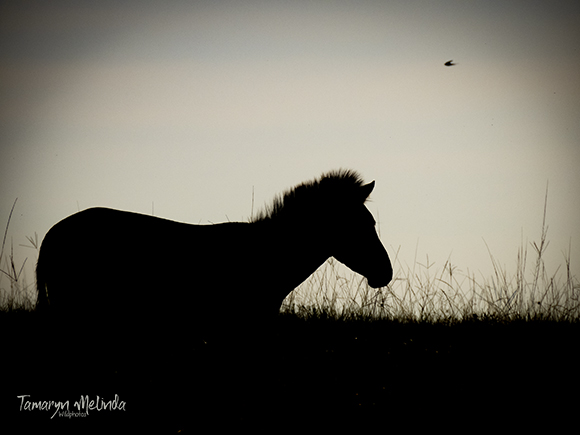
Zebra Silhouette
Maybe the chill you feel is from the sudden drop in temperature as the warming sun’s rays disappear behind the horizon? Or could the chill you feel … the one causing the fine little hairs on the back of your neck to stand to attention, be because something inside you knows you are not alone?
As the sun goes down you will notice that most of the day active animals (diurnal animals) such as Impala, Wildebeest etc, will quieten down and either take shelter in nearby bushes or stand tightly together, keeping a lookout and listening for any dangers that might be nearby.
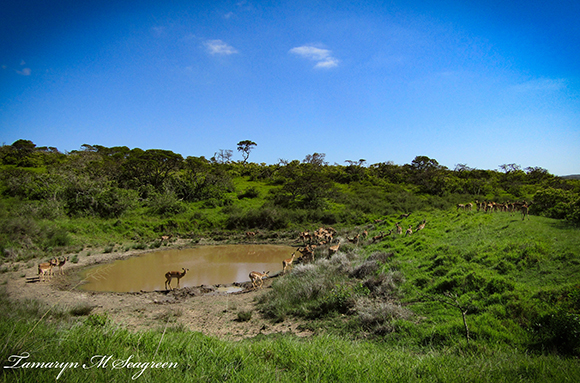
Impala Herd 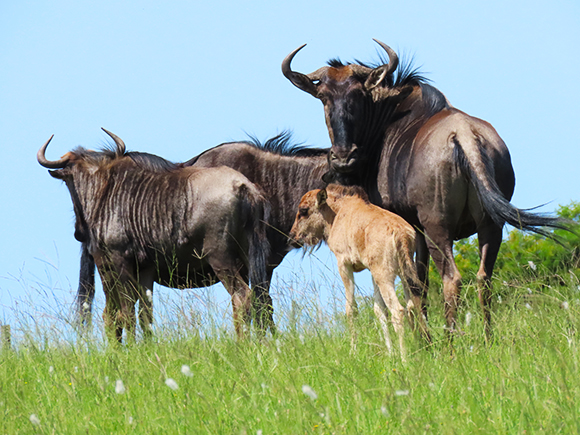
Wildebeest
The game reserve becomes an entirely different world in the dead of night. Now that the sun has set and the breeze has died down, the silence is deafening. All you can hear is the breath escaping your lips and the steady pace of your heartbeat in your ears.
Armed with nothing but a spotlight, driving slowly along the winding roads looking for fresh tracks and signs of nocturnal animals (animals active at night) is incredibly exciting.
I know by now you may be wondering, what nocturnal animals are you likely to see on our reserve during a night-time safari?
I don’t want to dampen anyone’s spirits but using the word ‘likely’ may raise your expectations a little too much. Nocturnal animals are incredibly secretive and elusive, usually running off at the slightest sound or movement. When it comes to night drives/safaris and nocturnal animals it’s important to keep an open mind.
If you’re planning on going on a night-time safari and you’re expecting to see as many animals as you did on your morning safari, unfortunately you will be disappointed. However, if you can appreciate the beauty of being on safari at night and you’re doing it more for the experience, then you’re going to have a really great time – and who knows what you may actually see.
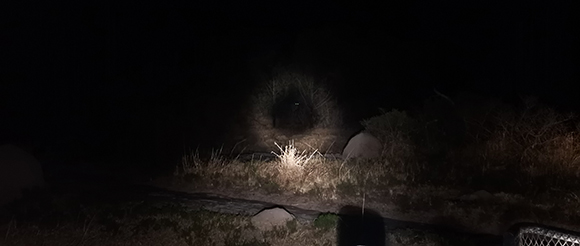
This is where I really appreciate the invention of trail cameras. A trail camera is a camouflaged camera that is set up somewhere hidden on the reserve and photographs any motion that it detects. The trail cameras that I use on the reserve don’t only take day-time photos they take night-time photos as well, allowing us to catch a glimpse of the mysterious nocturnal animals that roam the game reserve at night.
One of the most exciting nocturnal animals that have been photographed by the trail camera is a Large Spotted Genet (Genettatigrine). These little creatures look a bit like a mongoose as well as a cat making them quite unique. Having a total length of roughly 860mm (400mm being tail length) and a weight of around 1.6 kg, they are relatively small. Being solitary animals, they like to hide away in thick bushes and trees, however, if you’re lucky, you may see one quickly dart across the road on safari. They feed mostly on small mammals, but in breeding season they will also prey on birds, snakes, and other reptiles for the extra nutrition, occasionally feeding on various insects and fruit as well. The Large Spotted Genet (black tipped tail) can easily be confused with a Small Spotted Genet (white tipped tail) as they generally look almost identical and are of similar sizes. (210mm shoulder height)
Porcupine (Hystrix africaeaustralis) are so commonly photographed on the trail cameras that you would almost expect to see them on a night safari; however, these beautiful creatures are quick to scurry away into nearby bushes when they hear you approach. Weighing up to 30kg the African Porcupine is the largest species of Rodent.
The quills which cover the porcupine’s back can grow up to 50cm long and, contrary to popular belief, a porcupine cannot ‘shoot’ its quills at an attacker. The quills are hollow and loosely fitted in the skin. Porcupines use muscles to stiffen the quills and shake them, making themselves look and sound large and intimidating. The individual quills have barbs on the end so when they hook into an attacker, and the attacker pulls away, the quill will pull away easily allowing the porcupine to scurry off while his attacker deals with the quills. The quills grow back rapidly. Something I learned quite recently was that in amongst all the quills of a porcupine there are a select few called ‘rattle quills’ which add a lot of noise when a porcupine shakes them to intimidate attackers.
Emerging from the burrows that they sleep in during the day, porcupines feed mostly on roots, tubers, and bulbs by digging them up with their strong digging claws on foraging trips after dark. I have been fortunate enough to see quite a few porcupines on night safaris however I haven’t been quick enough to photograph one yet.
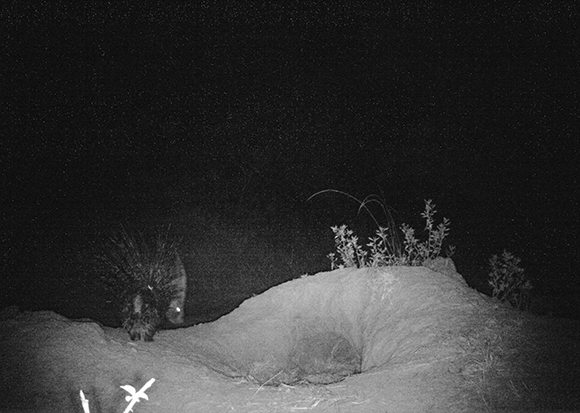
Onto one of my all time favourite captures by the trail camera . . . . A silent predator with long, black-tufted ears padding silently along the side of a road, with a reddish-gold coat it almost disappears from sight, leaving no sign that it has been there besides its tracks set in the soft sand. This predator is able to easily jump 5m high from a sitting position, with seemingly no effort.
Surely, I’m exaggerating? …Right?
Not even close.
A Caracal / Lynx (Caracal caracal) is an extraordinary predator. Silent, extremely agile and remarkably powerful for their size. Preying on birds, hence the amazing jumping ability, rodents, dassies (Hyrax), Scrub Hares, small antelope, and even small predators amongst other things. These elusive cats are characteristically extremely aggressive, not hesitating to defend themselves should they feel threatened.
Averaging between 11kg and 15kg a Caracal is small if you had to compare them to the size of a Lion (between 130kg and 240kg). Which makes it even more difficult to spot one of these exquisite animals. I have only had the pleasure of sighting a Caracal twice in my guiding career (6 years), although I have seen so many tracks and collected some beautiful photos of them from trail cameras.
Although predominantly nocturnal, Caracal will also be active in the late afternoon and early morning (Crepuscular) as well as occasionally during the day to hunt birds.
Another crepuscular animal to keep an eye out for is a Cape Clawless Otter. You may be wondering why you would need to look out for them on a night safari, well these beautiful animals are known to travel up to 7km from one body of water to the next. This is the only reason why one of the trail cameras managed to get such amazing photographs of them as they passed by.
I was quite taken aback at how large a Cape Clawless Otter is. Weighing up to 16kg with a length just under a meter. I am yet to have the privilege of seeing one of these animals myself. From what I have heard and researched, they are extremely intelligent, more so than any other species of predator and are notoriously mischievous and playful.
Any of you that have been on a night safari or ever stayed over night on a reserve in South Africa are bound to have heard the wailing call of a Black-backed Jackal.
These cunning dog-like animals are usually found out on the open plains or along a road, avoiding dense bush areas where they may risk predation from Leopard or Caracal. They are quite admirably adapted as they will eat almost anything that is available to them, carrion, fruits, insects, lizards, rodents, and larger prey up to the size of an adult Impala and young Wildebeest calf.
An over-population of Jackal or predators in general can be quite problematic during birthing season as they will favour hunting young calves and lambs, usually leaving the population growth for the season static, however, too few predators can result in an over-population of herbivores, which has a negative effect on the vegetation, ultimately having a negative effect on the population. Having the correct balance is important.
Black-backed Jackal are monogamous, meaning a breeding pair will bond for life. Something we can all strive for I believe.
Jackal pups from the previous years’ breeding season often stay with their parents as ‘helpers’, here they will learn and practice how to raise pups before leaving the family in search of a mate and new territory.
One of the first questions I get asked on a night safari is “Will we see Leopard?”.
Oh Leopard, beautiful, elusive and oh so secretive Leopard. I wish I could tell my guests “Yes.”, “Yes, we will see Leopard.”. All I can do is hope and search for the signs. (A strong smell of popcorn signifies a recent territorial marking.)
Leopard are the most elusive and secretive out of all nocturnal animals. They see you before you see them, they hear you before you hear them, and the truth is, the only time you will ever see a Leopard, is if they choose to show themselves to you. There is no such thing as sneaking up on a Leopard. I’ve had a handful of gorgeous Leopard sightings in my life, but unfortunately I have more quick sightings where you spot them out of the corner of your eye and when you look, they’re gone, but with Leopard, I’ll take what I can get, I absolutely love tracking them as you may have seen in my ‘Tracking Spoor and Animals’ blog.
These gorgeous cats have successfully avoided all the spots that I have set up trail cameras so far and have conveniently left scent markings on trees nearby. But, one day is one day, and then I will have a photo of a Leopard and not just tracks and signs to share with you all.
Although diurnal animals (animals active in the day), and crepuscular animals (animals active at dawn and dusk) aren’t very active at night, they do move around here and there when they feel it’s safe to do so. This is where the trail cameras have got some beautiful shots of Buffalo, Bushbuck, Duiker, Giraffe, Kudu, Nyala, Rhino, Warthog, Waterbuck, Blue Wildebeest, Zebra and even a little Lemon Dove (which I’ve never seen before).

Buffalo 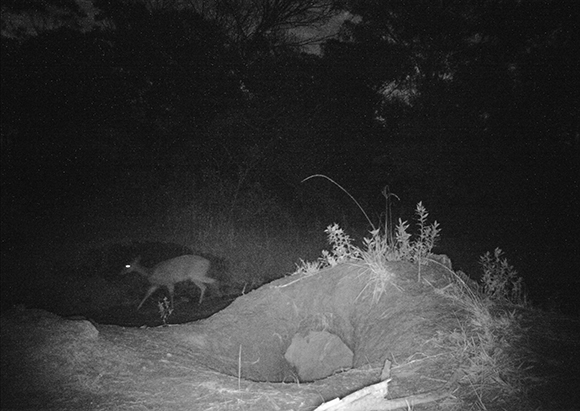
Bushbuck Ewe 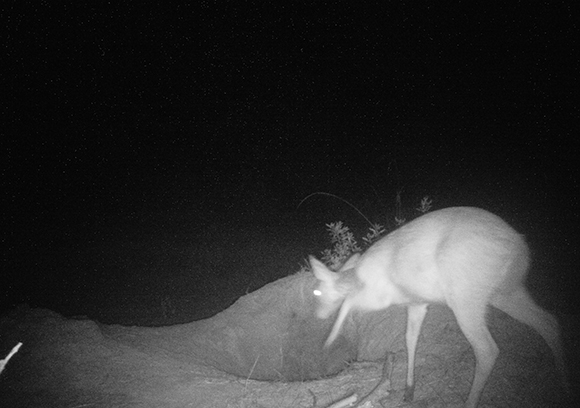
Duiker 
Giraffe 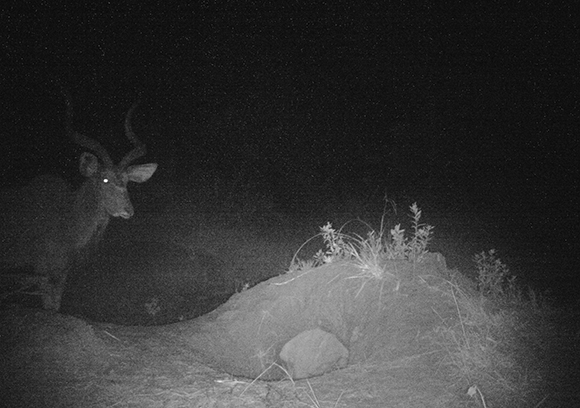
Kudu 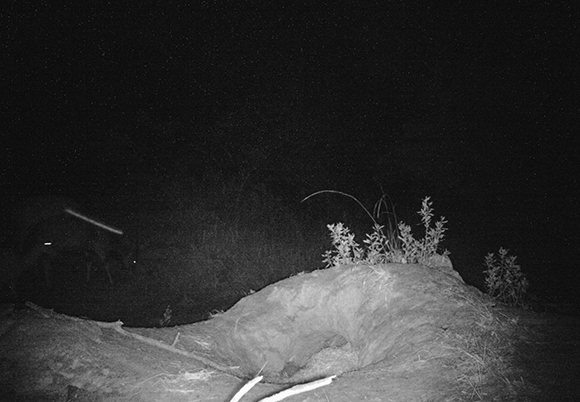
Nyala 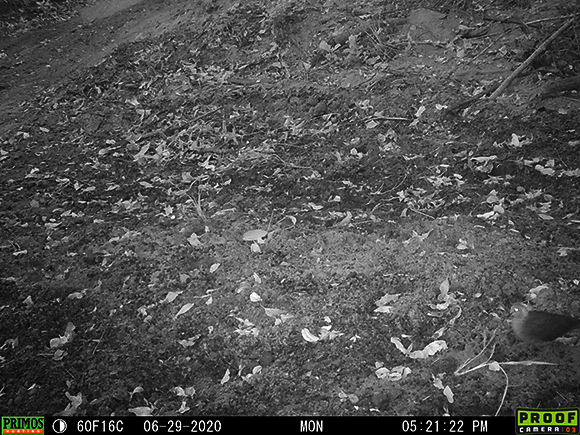
Lemon Dove 
Rhino 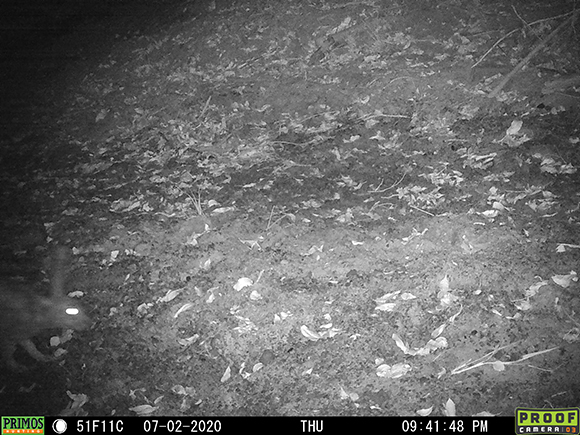
Scrub Hare
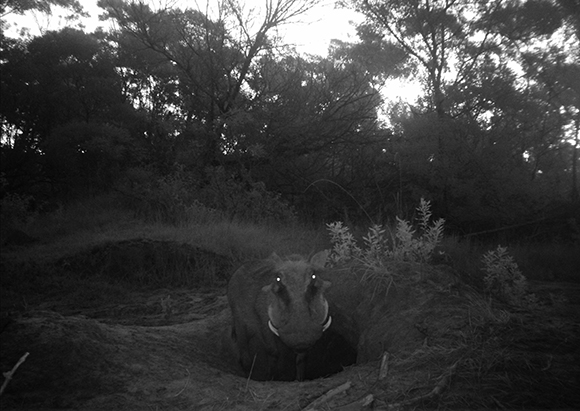
Warthog 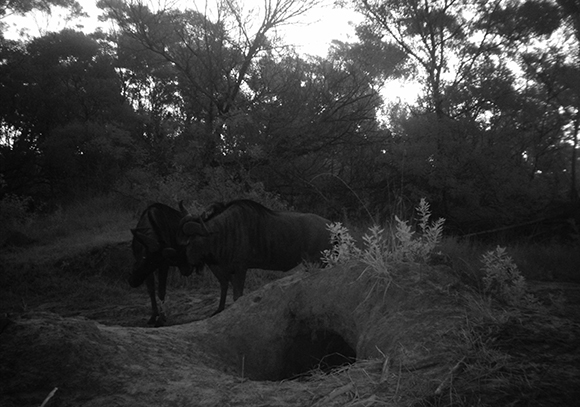
Wildebeest 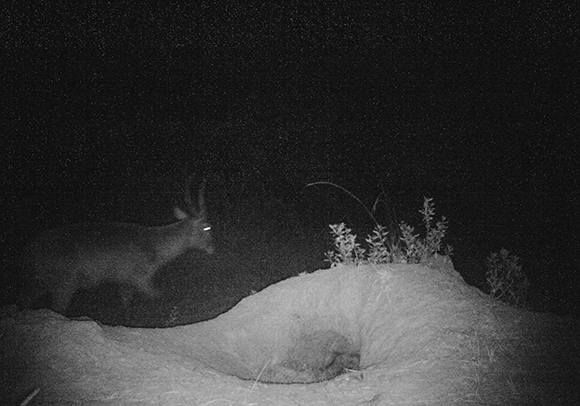
Waterbuck

Although the night is coming to an end, it brings a new beauty with it. A bright spectrum of orange and yellow piercing through the dark as the sun peaks over the horizon. A chorus of birds chirping in delight and the deep roar of the Lion sounding more humbling now with the sun warming your bones. Herds of Zebra, Impala and Wildebeest eagerly running across the plains. A beautiful beginning to a new day in the African bush.

Sunrise 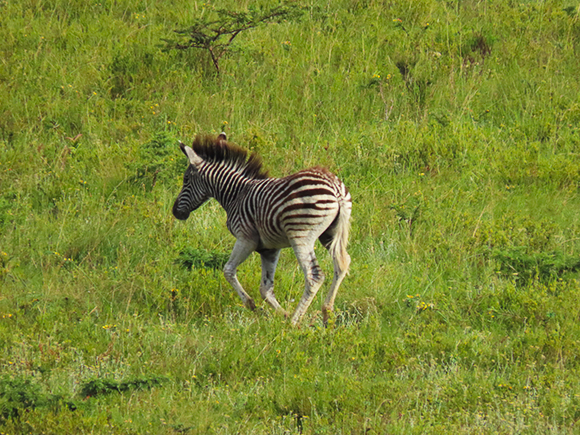
Zebra
Thanks for reading another one of my blogs, remember to stay safe.
Warmest regards,
Ranger Tammy




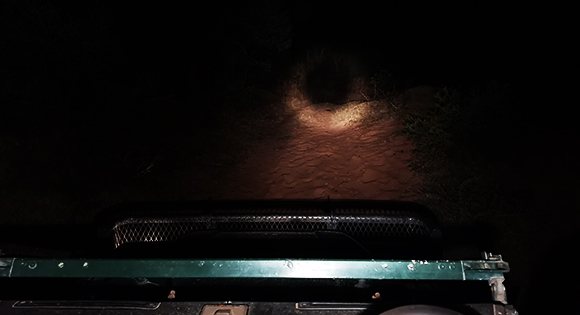
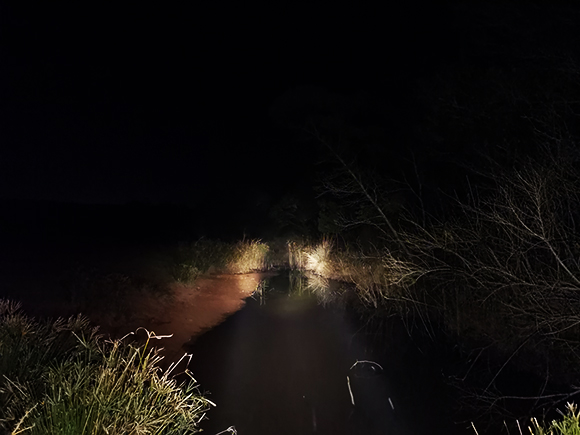
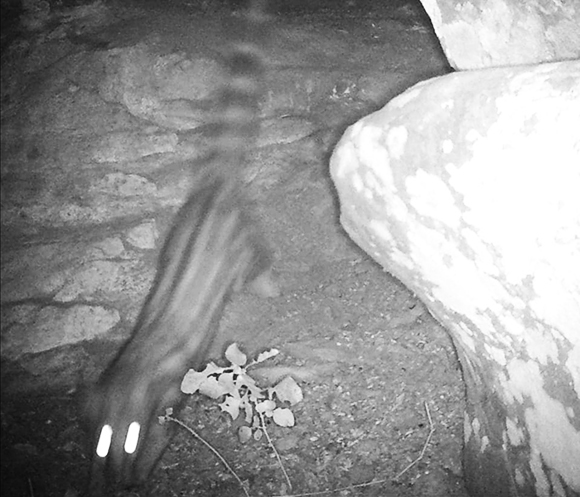
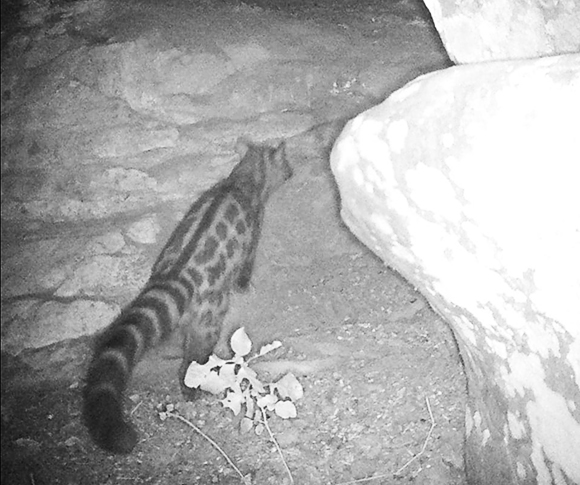
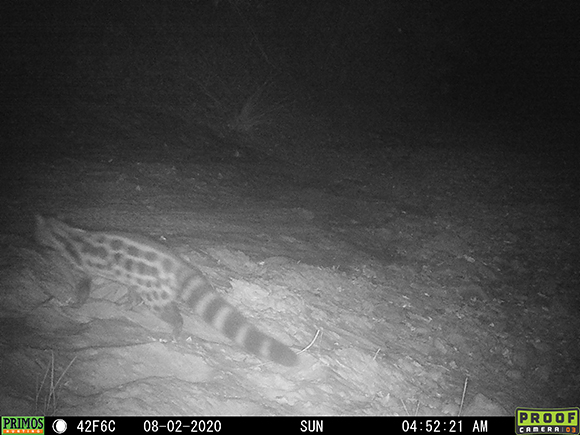
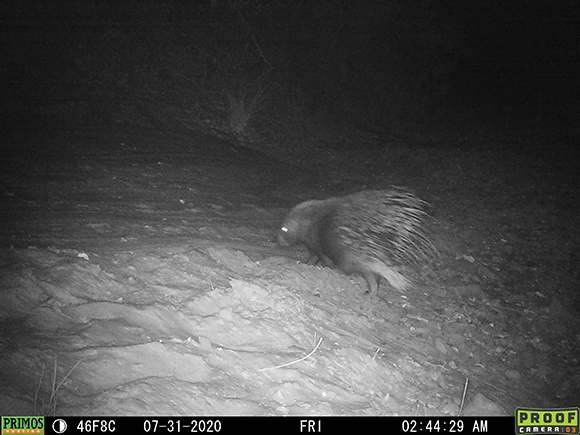
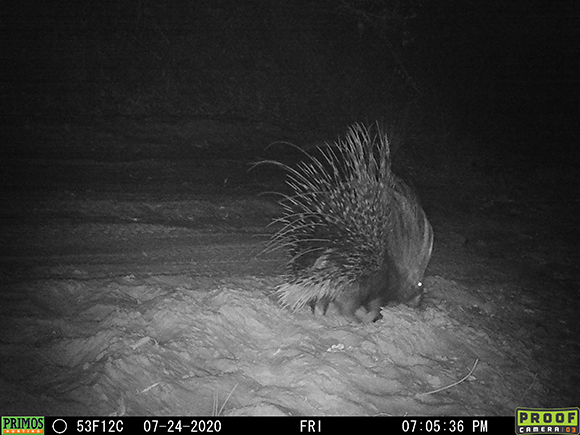
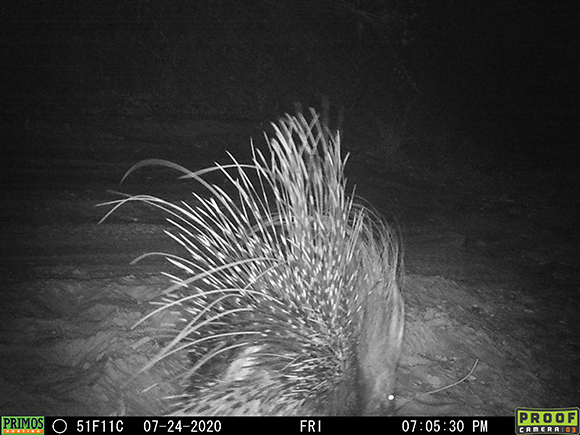
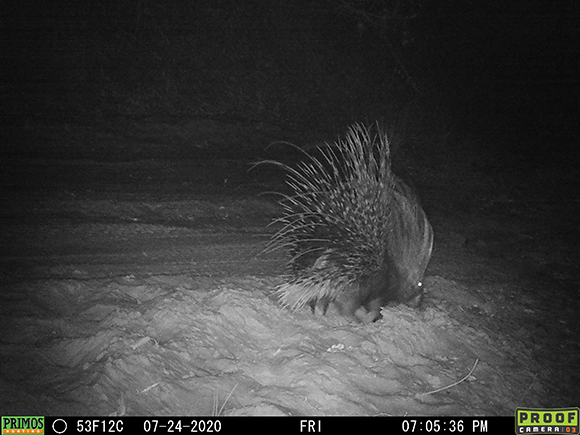
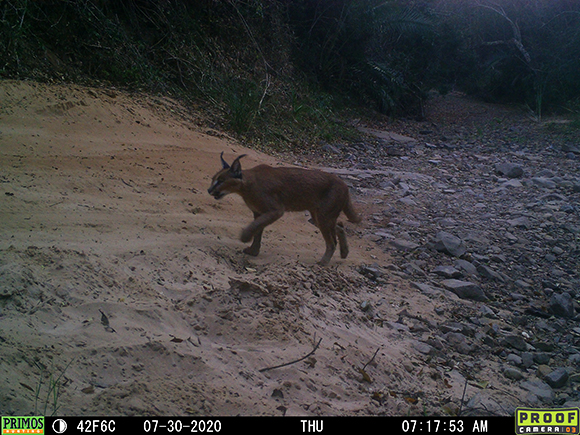
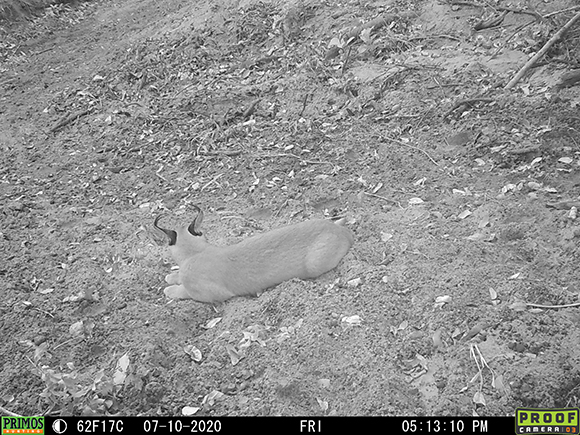
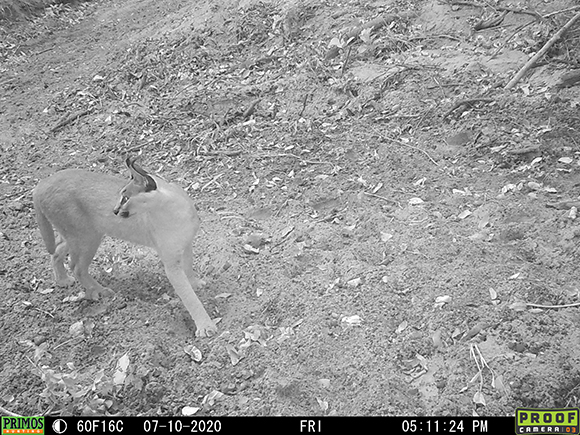
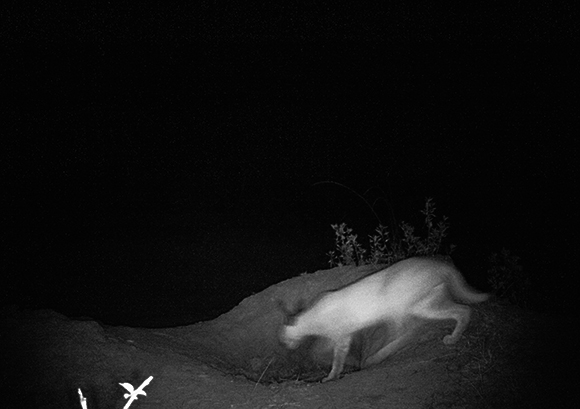
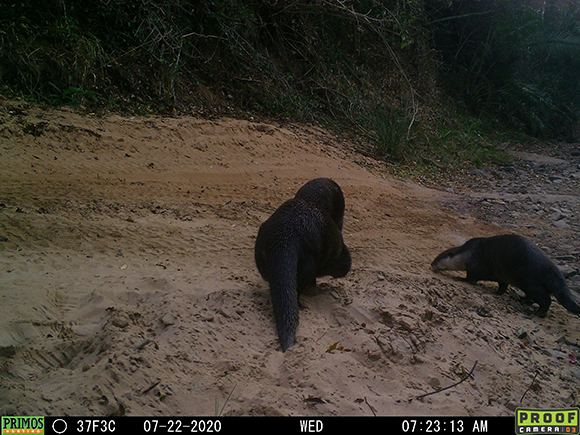
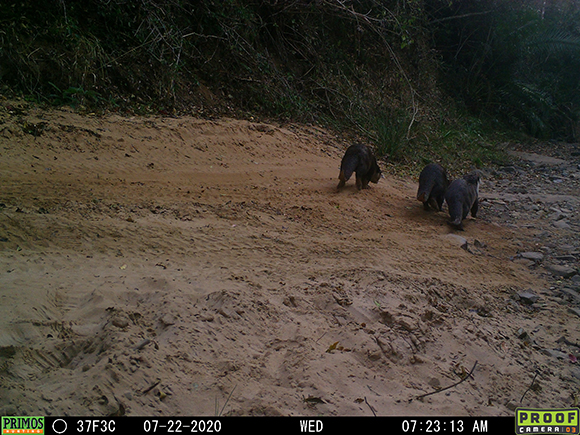
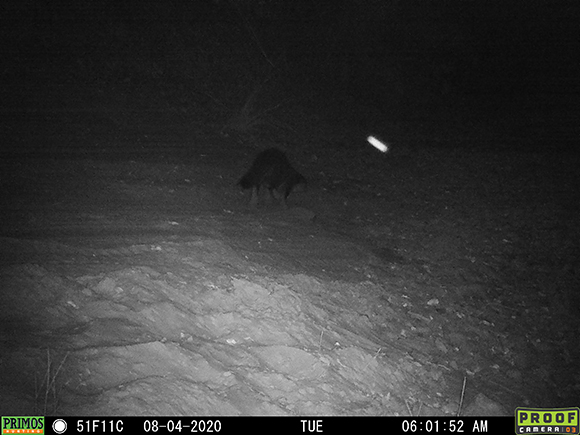
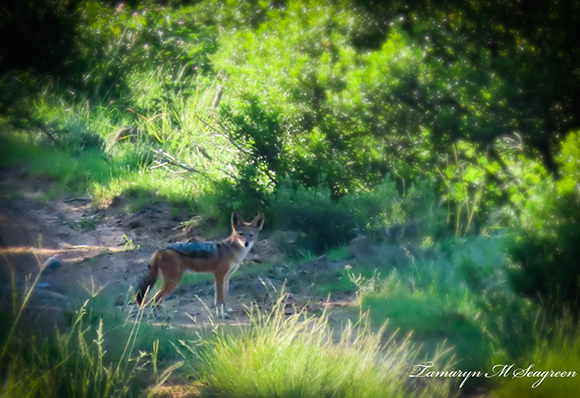
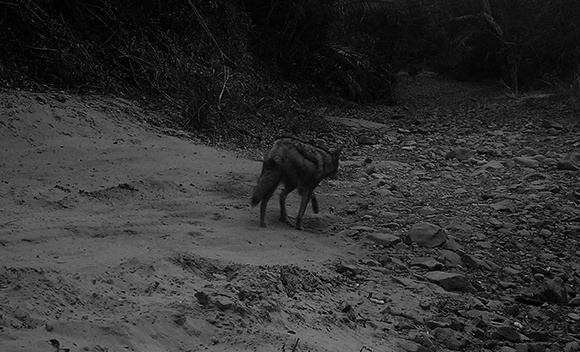

Excellent Tams and very informative.
Fascinating animal and a real challenge to a veterinarian to anaesthetise. Collapse of the valves stops supply of blood to the brain and death. Once down the animal has to be given the reversal drug in few minutes to prevent the cardio respiratory collapse. Enjoy the lovely rain regards
Excellent and informative
You must have had a spectacular view of all those animals after the rain…I will have to find someone to take me there when in East London. Enjoyed reading your post.
Great pics Tammy.
Will be there soon.
Regards
Gabriel
Another informative and excellent blog.
I just want to mention I am just all new to blogs and certainly loved your page. Almost certainly I’m likely to bookmark your blog . You surely come with wonderful posts. Thanks a lot for sharing your web-site.
I simply want to say I am beginner to blogging and site-building and seriously loved you’re web site. Very likely I’m likely to bookmark your blog . You absolutely come with tremendous articles and reviews. Appreciate it for revealing your webpage.
I simply want to mention I am very new to blogging and seriously liked your web blog. Almost certainly I’m want to bookmark your site . You surely have terrific article content. Regards for revealing your web page.
I just want to mention I am just beginner to blogging and site-building and really savored this website. Probably I’m going to bookmark your website . You surely have very good articles. Thank you for revealing your web page.
I truly appreciate this post. I have been looking all over for this! Thank goodness I found it on Bing. You have made my day! Thank you again!
It’s truly a nice and helpful piece of info. I am satisfied that you just shared this useful information with us. Please keep us up to date like this. Thank you for sharing.
wonderful post, very informative. I wonder why the other specialists of this sector don’t notice this. You must continue your writing. I’m sure, you’ve a great readers’ base already!
Thank you so much for providing individuals with a very remarkable possiblity to read articles and blog posts from this site. It’s usually so lovely and also stuffed with amusement for me and my office mates to visit your blog on the least thrice in one week to study the new secrets you have got. And definitely, I’m just certainly astounded considering the magnificent tactics served by you. Selected 3 points in this posting are absolutely the most suitable I’ve ever had.
I’d should check with you here. Which isn’t one thing I often do! I get pleasure from studying a submit that may make folks think. Additionally, thanks for allowing me to comment!
It’s not my first time to go to see this web page, i am visiting this web site
vrry often and take good facts from here.
Well I certainly liked learning this. This topic acquired through you is extremely efficient for accurate planning.
You are so cool man, the post on your blogs are super great.~~.’”
I am delighted that I detected this weblog, just the right information that I was looking for!
Hey! I loved your article. Keep writing stuff like this. I’ll return to see more articles like this. It was very creative. TTYL!
I am glad to be a visitor of this gross weblog, appreciate it for this rare info!
I like it whenever people come together and share thoughts.Great website, continue the good work!|
I conceive this web site contains some rattling fantastic info for everyone : D.
This website is really a walk-through you discover the details it suited you in regards to this and didn’t know who must. Glimpse here, and you’ll absolutely discover it.
Usually I don’t read post on blogs, but I wish to say that this write-up very forced me to try and do so! Your writing style has been surprised me. Thanks, very nice post.
Solid post! I actually wasn’t aware of this. It’s refreshing to read because I get so annoyed when writers put no thought into their work. It’s obvious that you know what you’re writing about. I shall definitely visit again!
Really Interested site this is.. I really Enjoy a lot reading your Blog.. I will Bookmark your site for more remark.
Have you considered about including some social bookmarking buttons to these blogs. At least for twitter.
Fantastic article! I’ll be back to see your next article! Thank you!
You made some nice points there. I looked on the internet for the subject matter and found most individuals will agree with your site.
Hello! I could have sworn I’ve been to this blog before but after browsing through some of the post I realized it’s new to me. Anyways, I’m definitely happy I found it and I’ll be book-marking and checking back frequently!
This is really fascinating, You are a very professional blogger. I’ve joined your rss feed and sit up for searching for more of your great post. Also, I have shared your site in my social networks!Cleora Pilling
You seem to be very professional in the way you write.::’~*Estella Matchett
I really enjoyed this blog post. You are an excellent writer. I’ll be back to see more! Thanks so much!
This site is great. I’ll return soon to see more. Thanks so much! Have a great day!
I’am amazed